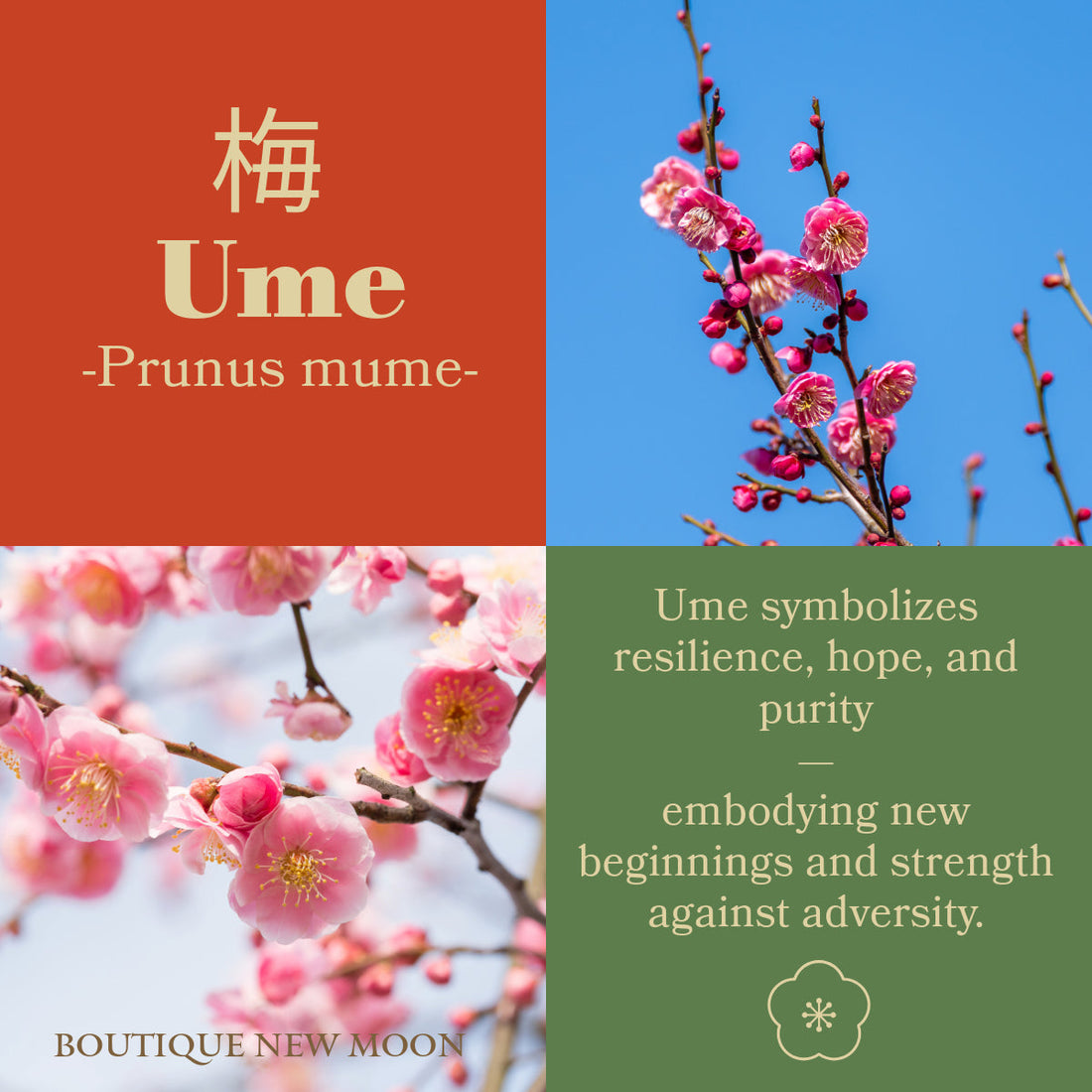
Ume - The magical plum blossom and its meaning in Japan
As winter comes to an end, one of the most beautiful seasons begins in Japan.
The Ume blossom (梅), these delicate flowers often appear as early as February and are a sign of the approaching spring. In contrast to the popular cherry blossom (Sakura), Ume blossoms stand for constancy, strength and happiness. So they are not only beautiful to look at, but also have a deep meaning for Japanese culture.
Ume in Japanese Culture
The ume flower has a long history in Japan and is often depicted in poems, art and kimono patterns.
It symbolizes:
- Endurance: Since it blooms during the cold season, it stands for inner strength.
- Luck and protection: Ume trees can be found in many Shinto shrines because they are supposed to drive away evil spirits.
- Love and beauty: Especially in traditional art, she stands for grace and elegance.
Mizuhiki and the Ume motif - A symbol of luck and elegance
Mizuhiki (水引) is a traditional Japanese art in which thin paper cords are intricately tied into decorative motifs. One of the most popular designs is the Mizuhiki-Ume , a stylized plum blossom pattern.
Why is the ume-form so popular?
In Japan, the ume blossom symbolizes luck, protection and stability - these are precisely the qualities reflected in the Mizuhiki Ume motif. It is often used for special occasions.
- Weddings - As a symbol of a happy and strong marriage.
- New Year's Gifts - To wish good luck for the coming year.
- Thank you gifts - an elegant way to express appreciation.
Mizuhiki-Ume in the Modern World
Today, the Mizuhiki Ume motif is not only used for traditional gifts, but is also integrated into fashion and accessories. Hair accessories, earrings, brooches and gift wrapping, cards are particularly popular.
In my online shop you will find beautiful Mizuhiki Ume designs that capture the elegance and symbolism of this special flower. Please stop by and discover the beauty of Japanese handicrafts. HERE
